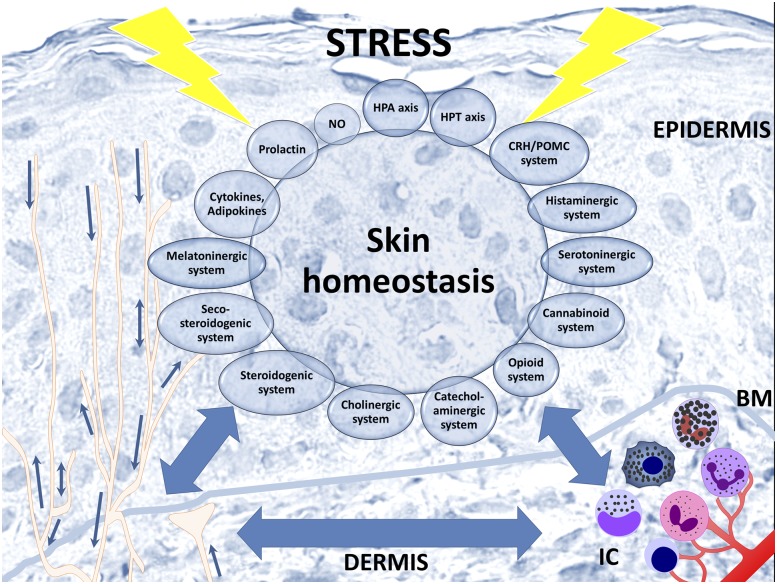Figure 2.
Skin neuroendocrine system. The skin neuroendocrine system integrates locally and centrally produced classical neuroendocrine or endocrine signaling molecules, thus providing a natural platform of interaction between internal organs and environment. To respond to a variety of internal and external signals, skin cells not only are sensitive to neurohormonal regulation but also produce elements of the HPA axis or hypothalamic-pituitary-thyroid axis, as well as other neuropeptides, biogenic amines, serotonin, melatonin, NO, opioids, cannabinoids, catecholamines, acetylcholine, steroids, secosteroids, and growth factors adipokines and cytokines. Skin’s neuroendocrine system comprises epidermal and dermal cells including resident immune cells, nerve endings, and sensory receptors in the skin and its appendages. BM, basement membrane; IC, immune cells; HPT, hypothalamic-pituitary-thyroid.

